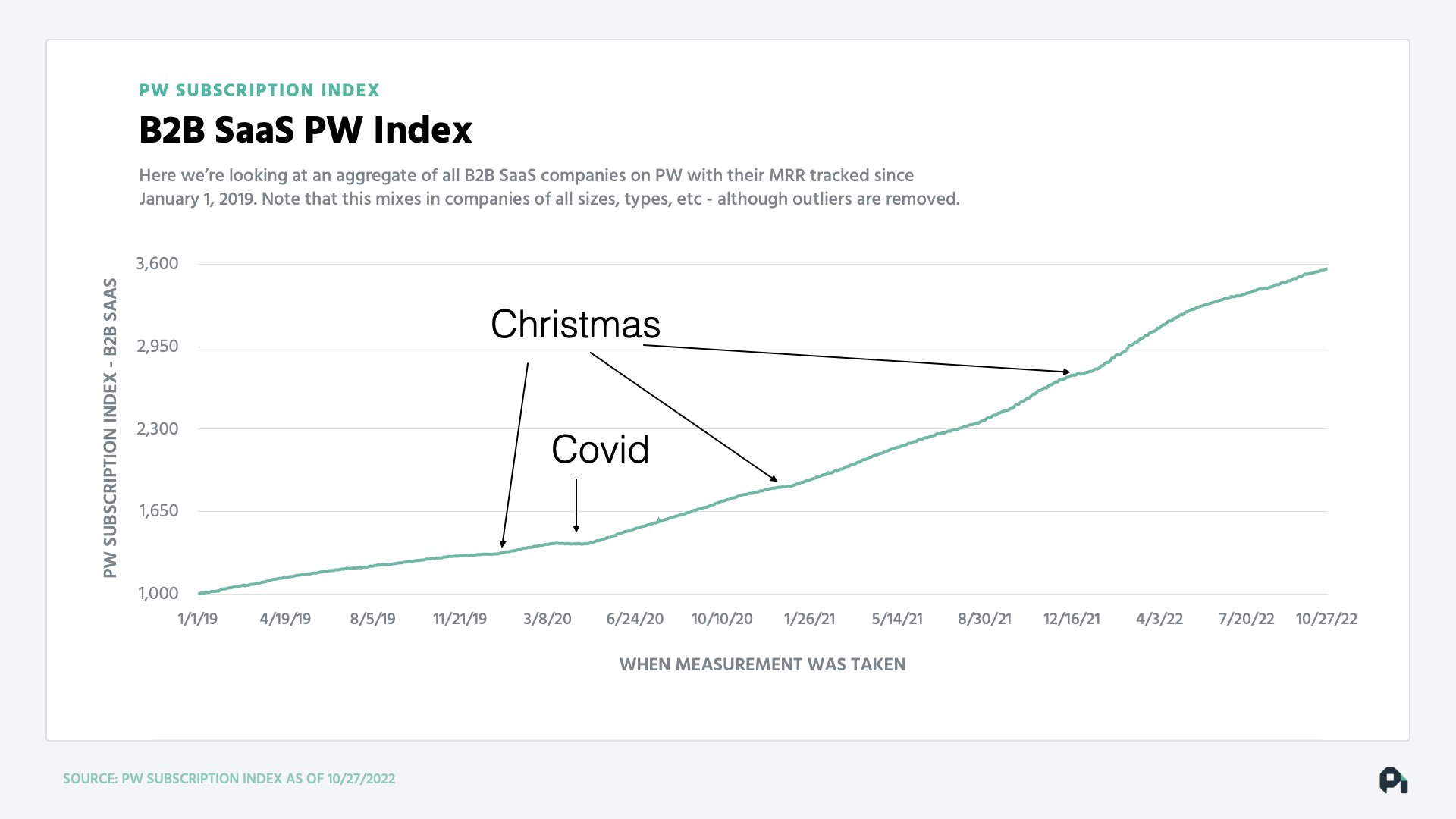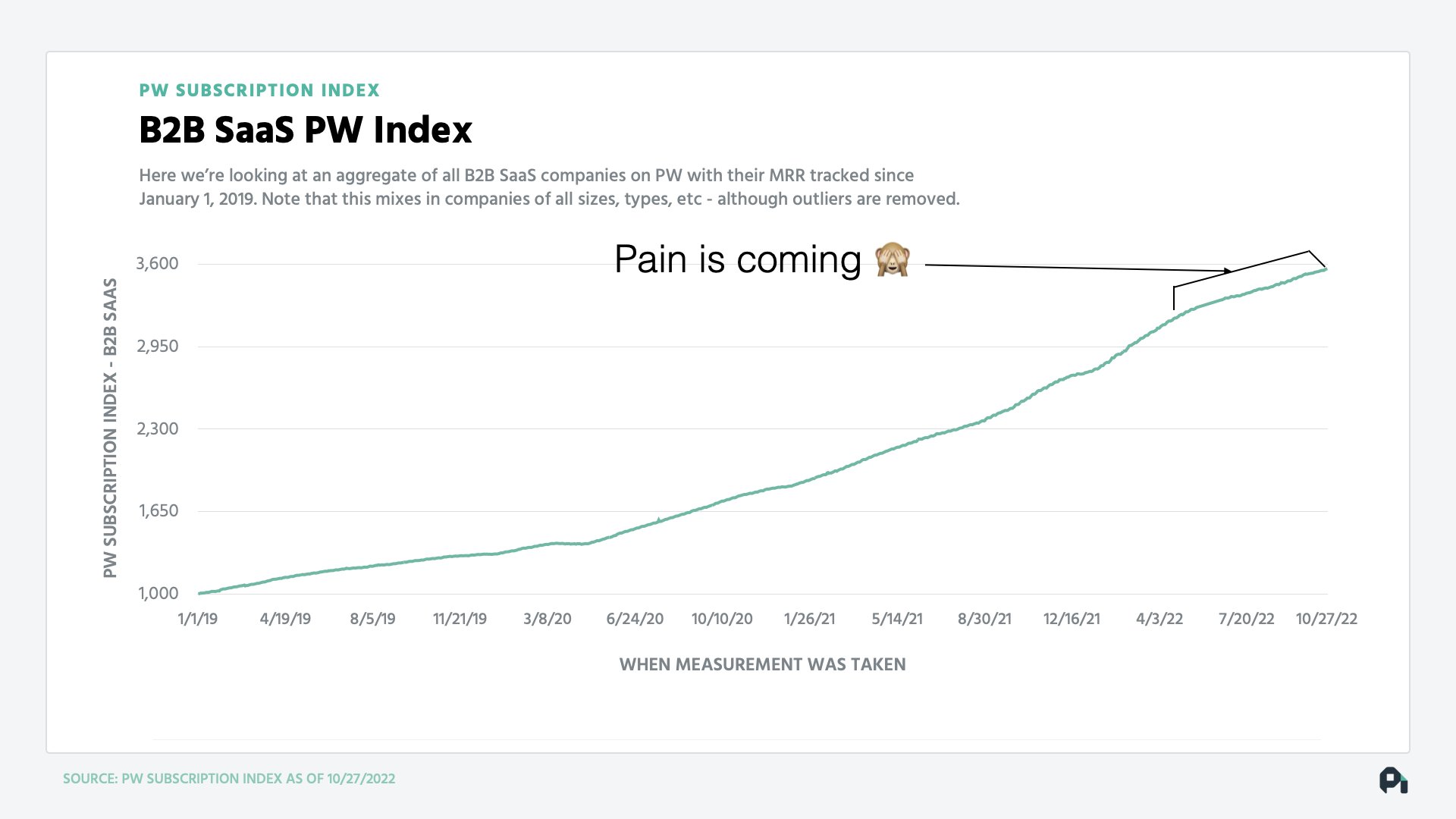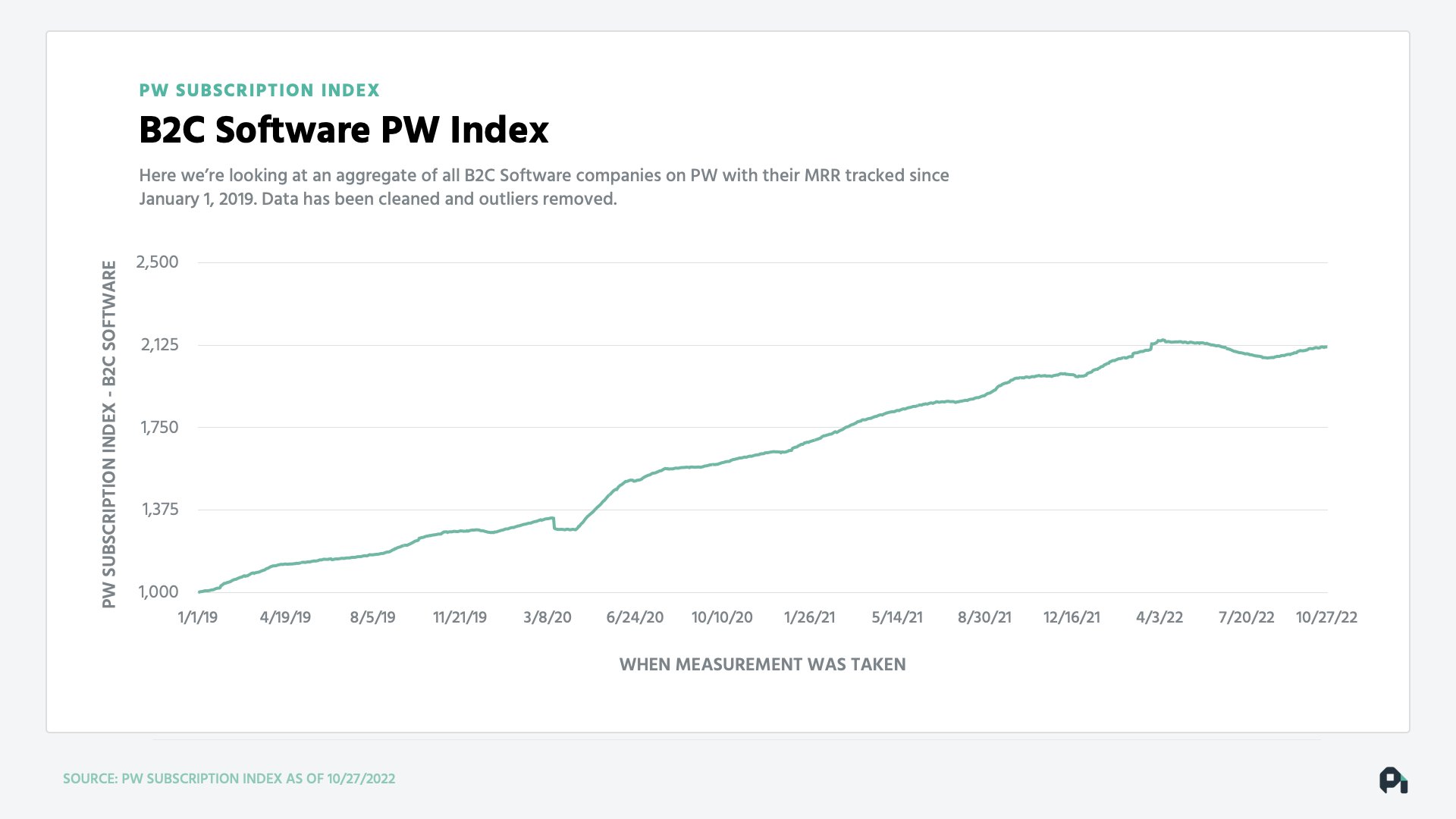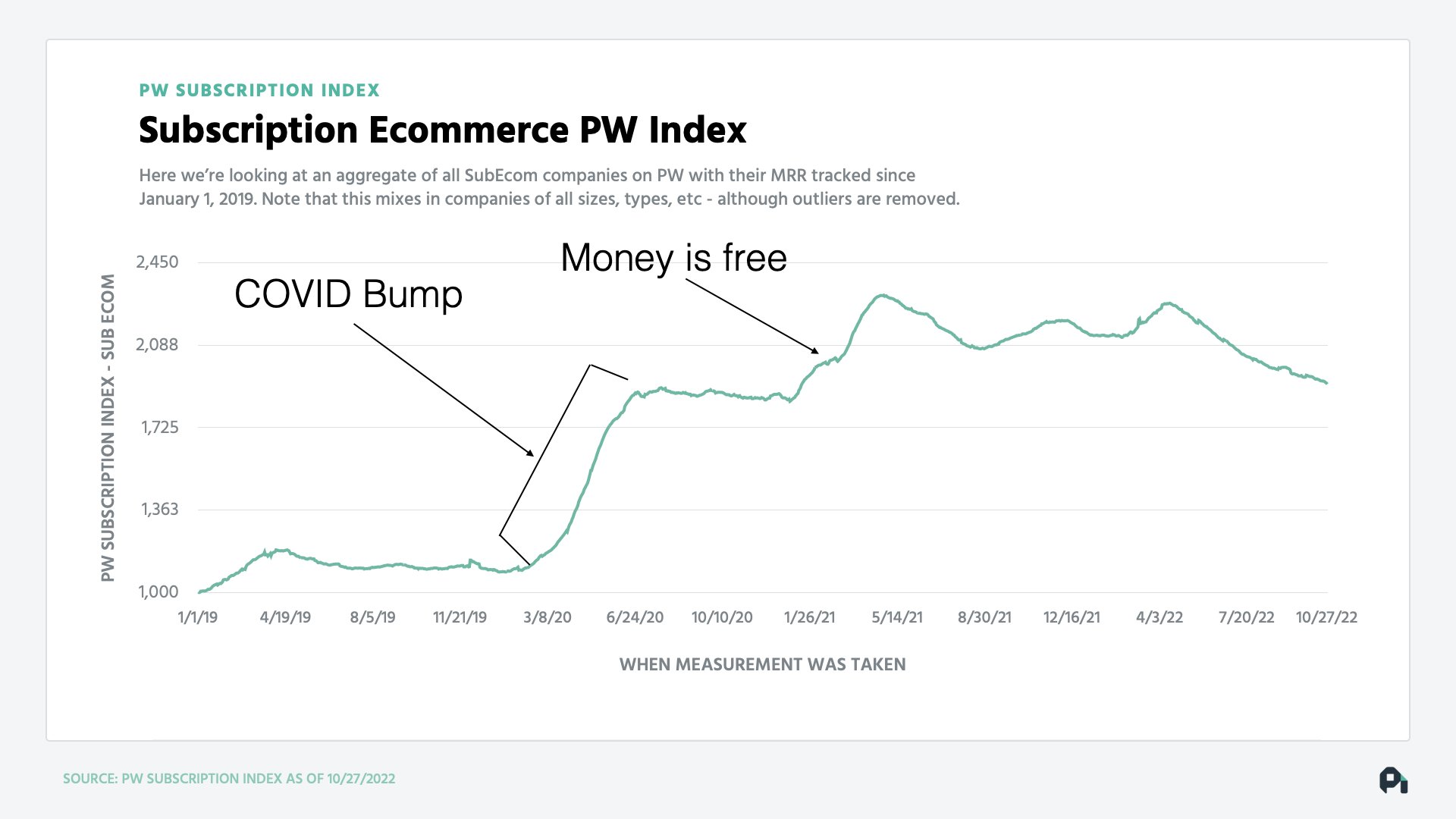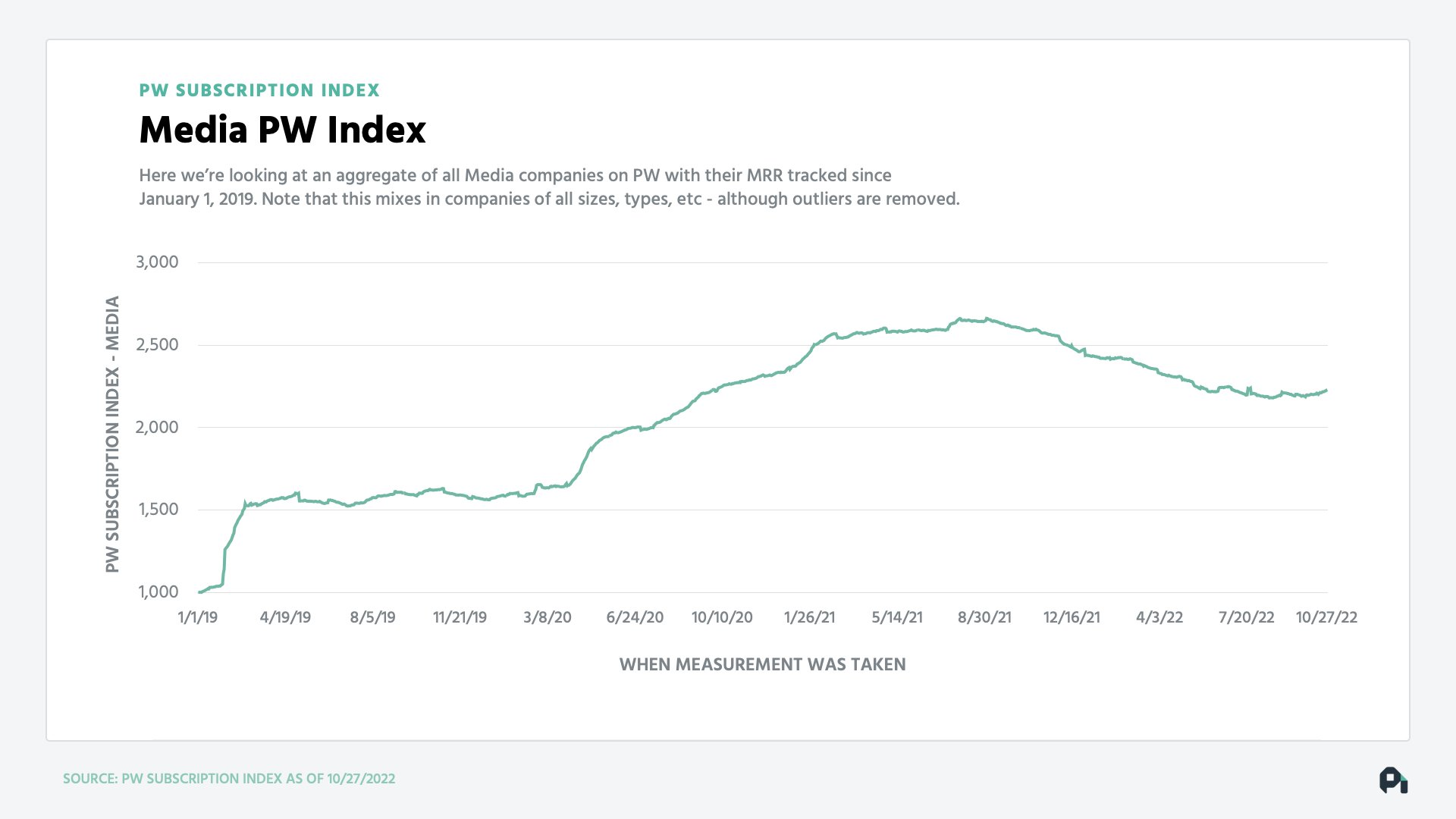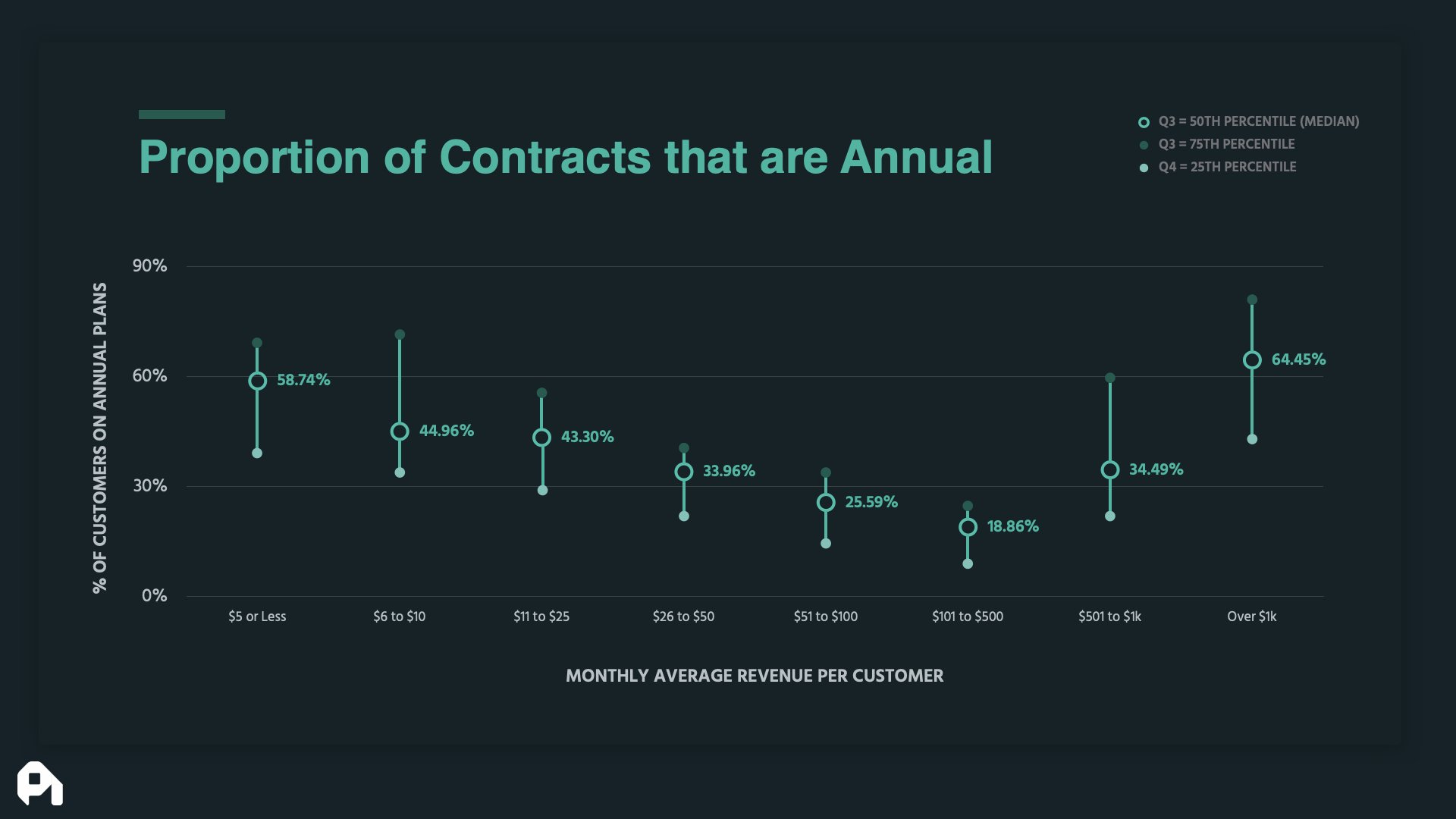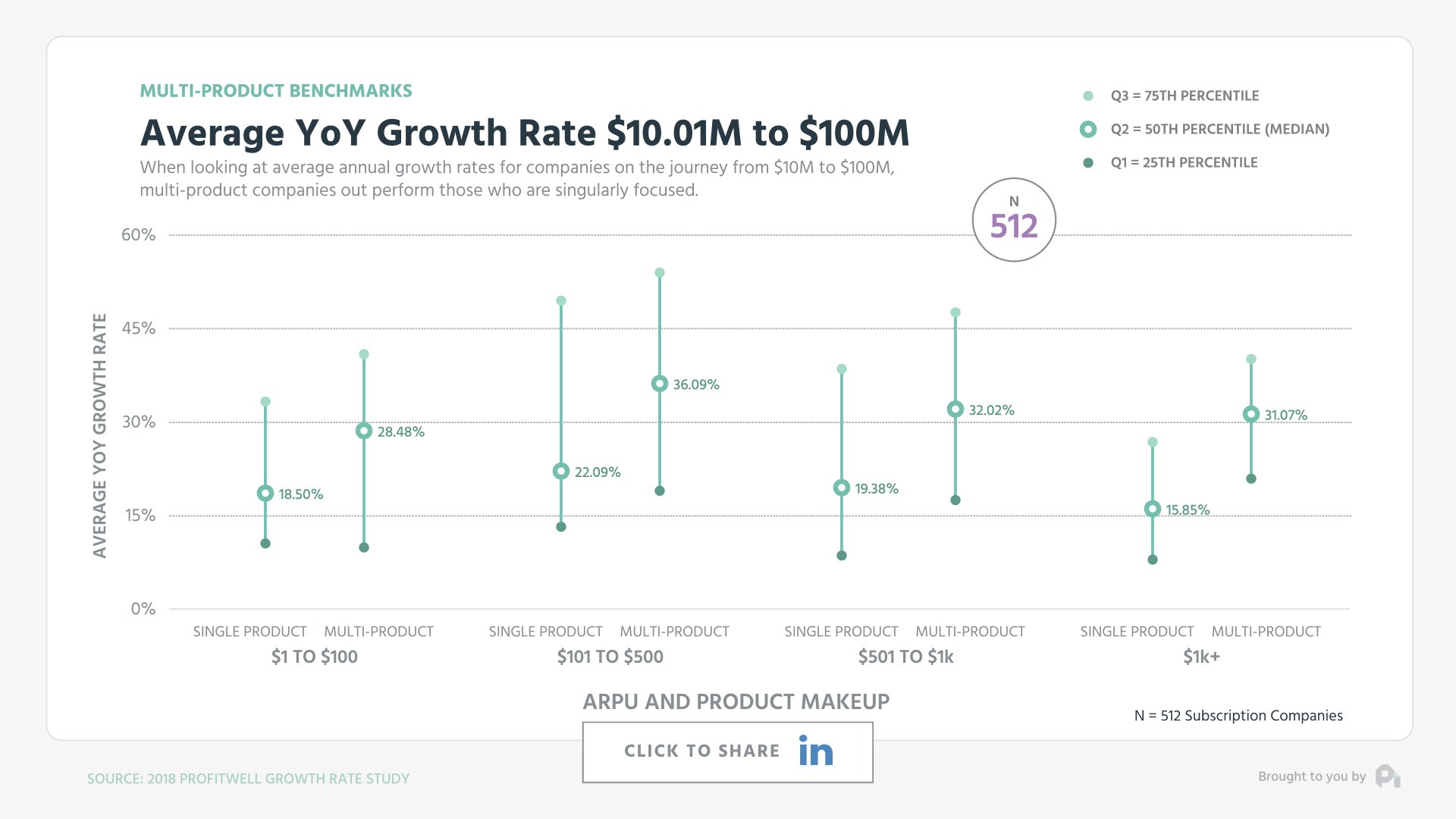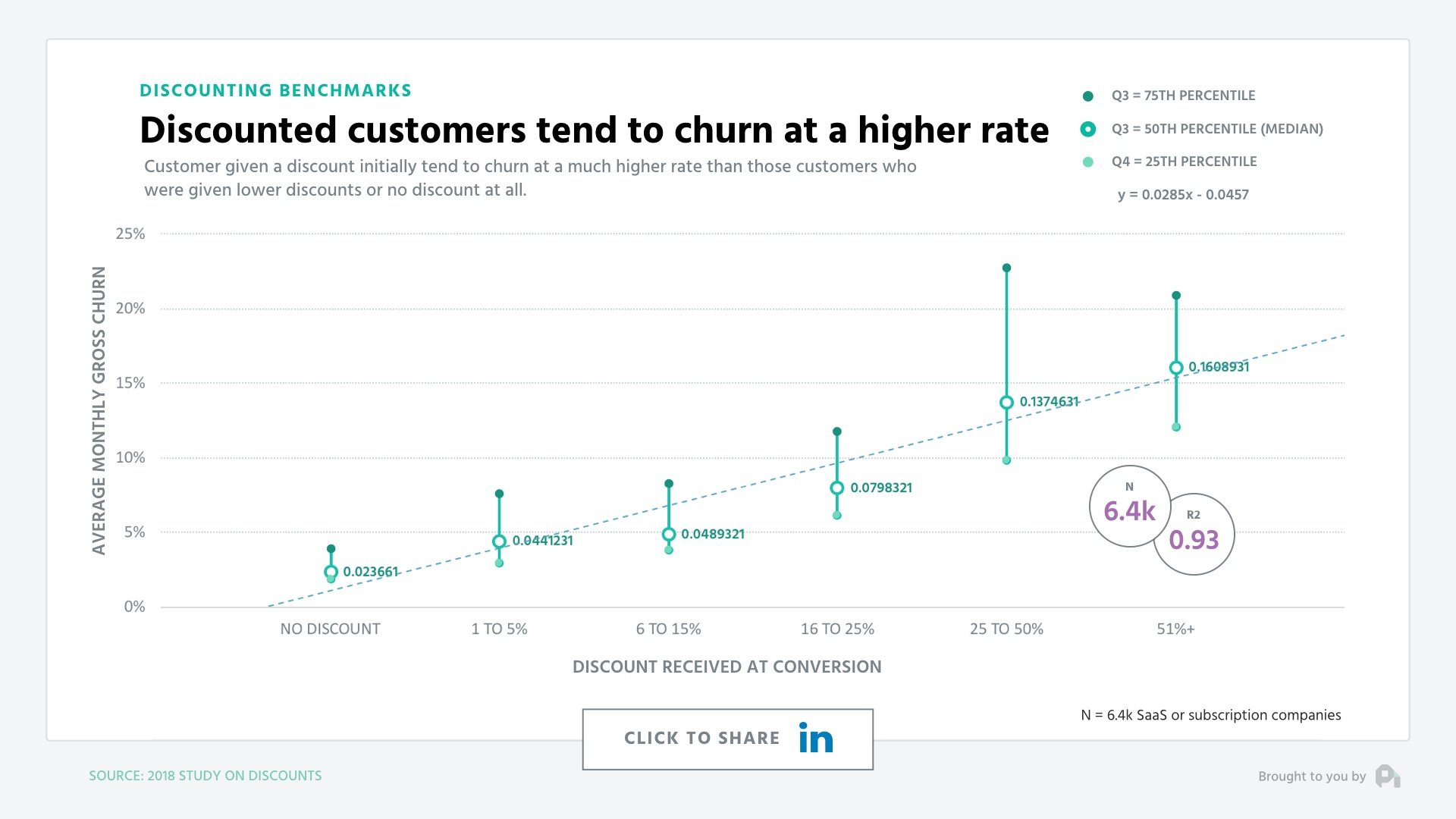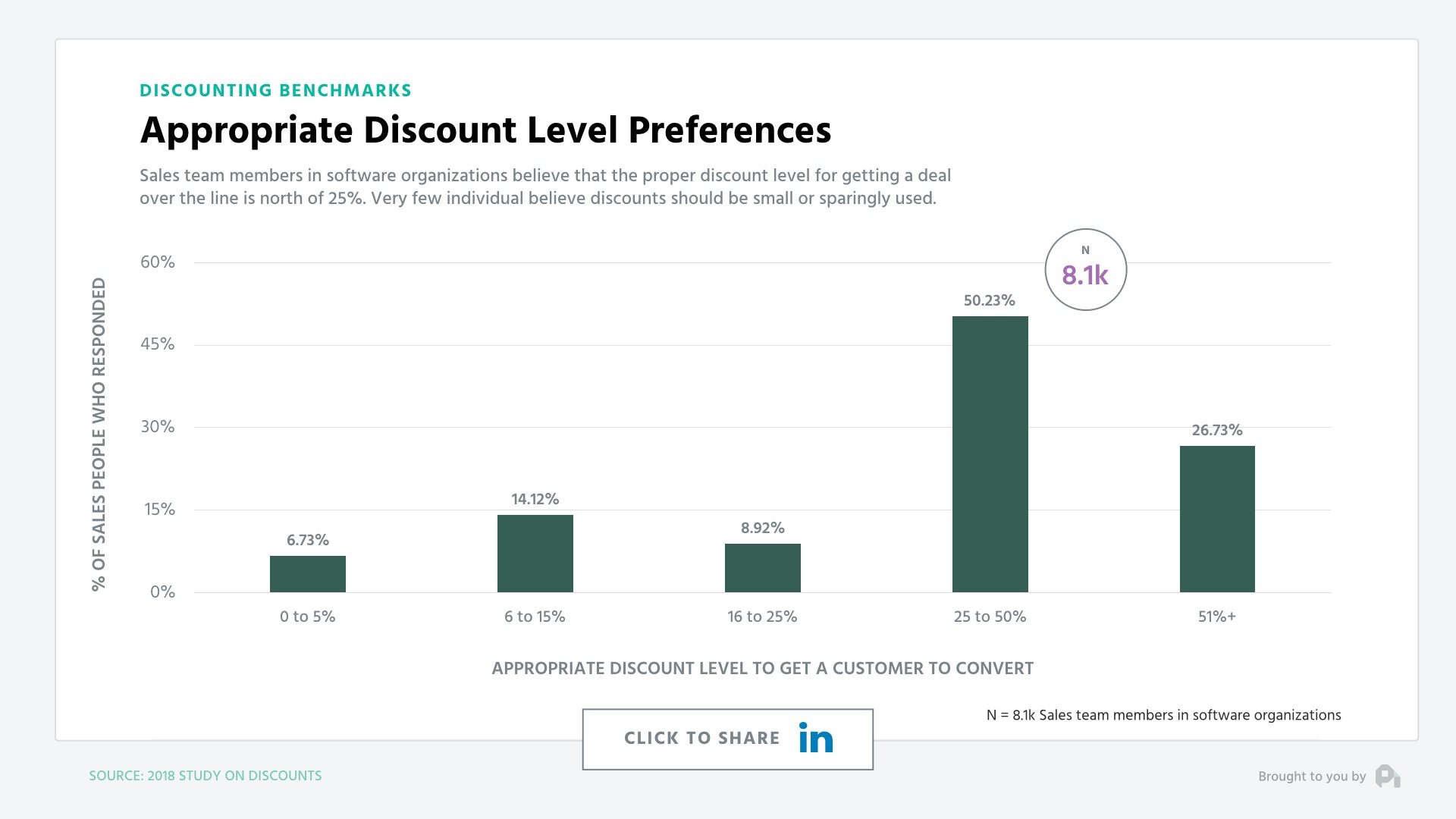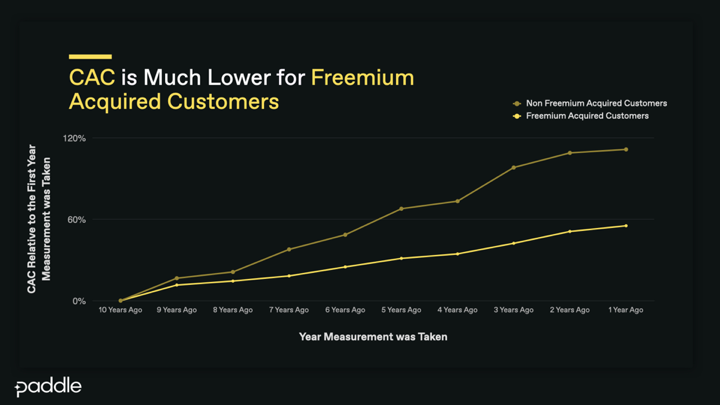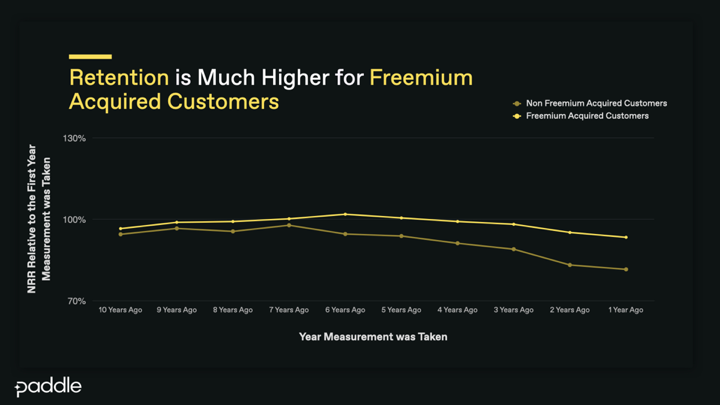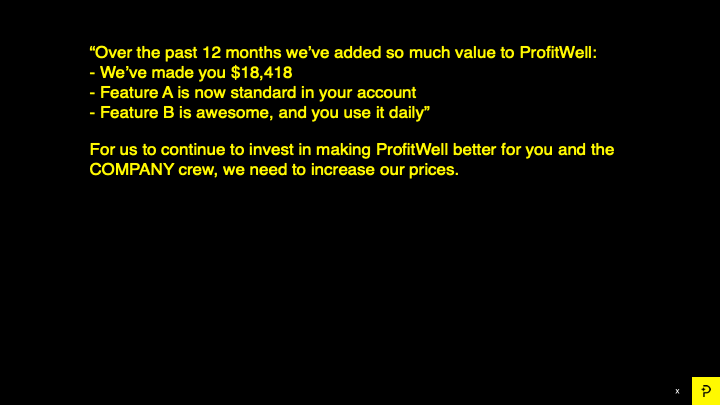Thread
How bad will the recession be?
After analyzing revenue data from 27.2k companies: it's worse than we thought.
- B2B getting hit hardest since '08
- Consumer $$ tanking
What should you do?
- 6 ways to not lose in recessions
- 4 ways companies win in them
Thread time 🧵
After analyzing revenue data from 27.2k companies: it's worse than we thought.
- B2B getting hit hardest since '08
- Consumer $$ tanking
What should you do?
- 6 ways to not lose in recessions
- 4 ways companies win in them
Thread time 🧵
Let's first look at businesses who sell to other businesses (B2B).
Here's revenue growth since 2020.
Notice how COVID was no worse than a Christmas slowdown. Just a little blip.
Mazel Tov everyone. 🎅🕎
But wait - what's happening at the end of that graph? 😳
Here's revenue growth since 2020.
Notice how COVID was no worse than a Christmas slowdown. Just a little blip.
Mazel Tov everyone. 🎅🕎
But wait - what's happening at the end of that graph? 😳
B2B revenue growth is slowing at a rate we haven't seen since the 2008 recession. 📉
I get it looks small, but it's just starting.
B2B markets are normally insulated. They're larger than consumer markets.
That is - until consumer markets get *very* bad, which...they bad. 🙈
I get it looks small, but it's just starting.
B2B markets are normally insulated. They're larger than consumer markets.
That is - until consumer markets get *very* bad, which...they bad. 🙈
Here's revenue for consumer, media, and ecom subscription companies.
Not good.
This is worrying, because when consumer markets get bad, businesses lay people off, which worsens consumer markets, causing businesses to cut...
It's a cycle.
Don't worry - it gets worse.
Not good.
This is worrying, because when consumer markets get bad, businesses lay people off, which worsens consumer markets, causing businesses to cut...
It's a cycle.
Don't worry - it gets worse.
Both B2B and B2C markets are getting hit by:
A. new sales slowing 20-30%
B. cancellations increasing 15-20%
One of those happening is a typical market reaction.
When both happen - it's a *big* market problem.
Read: We're heading into a bumpy 2 years.
"PC - ummm what do I do?"
A. new sales slowing 20-30%
B. cancellations increasing 15-20%
One of those happening is a typical market reaction.
When both happen - it's a *big* market problem.
Read: We're heading into a bumpy 2 years.
"PC - ummm what do I do?"
You probably don't remember the last recession - it's been 14 years!
Here's how the best survive:
1 Attack costs
2 Shore up customers
3 Accelerate cross-sell
4 Nuke current segments
5 Retool geographies
6 Slash discounts (ironic, I know)
Let's walk through how they do each 👇
Here's how the best survive:
1 Attack costs
2 Shore up customers
3 Accelerate cross-sell
4 Nuke current segments
5 Retool geographies
6 Slash discounts (ironic, I know)
Let's walk through how they do each 👇
1. Cut costs to get runway to 24 months.
Pull out your Amex bill.
Load your P&L.
Open up payroll.
Scrutinize everything and cut, cut, cut.
"But PC - I run a tight ship"
No. You've been a drunken sailor the past two years.
We all have.
Here's some waste.
Pull out your Amex bill.
Load your P&L.
Open up payroll.
Scrutinize everything and cut, cut, cut.
"But PC - I run a tight ship"
No. You've been a drunken sailor the past two years.
We all have.
Here's some waste.
Recruiting spend?
You're not hiring.
Team fun budget?
Halve it.
7 tools because "preferences"?
We use 1 now.
Lower procurement review thresholds and cancel cards to start new.
You'll find mucho dinero.
Re-forecast with your pre-drunk 2019 assumptions.
You'll find more.
You're not hiring.
Team fun budget?
Halve it.
7 tools because "preferences"?
We use 1 now.
Lower procurement review thresholds and cancel cards to start new.
You'll find mucho dinero.
Re-forecast with your pre-drunk 2019 assumptions.
You'll find more.
2. Shore up customers
Surprise - customers are re-evaluating costs, too.
You can't do much about hard hit customer segments.
They're gone.
You can clean up your unforced retention errors though.
How?
Target "tactical" churn.
"PC - what the heck is that?"
🤫 - I got you.
Surprise - customers are re-evaluating costs, too.
You can't do much about hard hit customer segments.
They're gone.
You can clean up your unforced retention errors though.
How?
Target "tactical" churn.
"PC - what the heck is that?"
🤫 - I got you.
Tactical churn's the nudges you do to keep or bring back customers near the point of cancellation.
Here's how:
- Payment failures: 20-40% of your churn. You can halve that. 🤯
- Salvage offers: you can save up to 25% of the people who hit cancel (data below)
Want some more?
Here's how:
- Payment failures: 20-40% of your churn. You can halve that. 🤯
- Salvage offers: you can save up to 25% of the people who hit cancel (data below)
Want some more?
- Convert monthly subs to annual: 200-800% higher LTV (data below on how many).
- Reactivation campaigns: send every 60 days to bring back 5% of churn.
All of these add up, but you haven't implemented any.
If not now, when?
"PC - ok I will, but what about *new* revenue?"
- Reactivation campaigns: send every 60 days to bring back 5% of churn.
All of these add up, but you haven't implemented any.
If not now, when?
"PC - ok I will, but what about *new* revenue?"
3. Clean slate your target segments.
Your market has shifted.
That's ok. Just reevaluate.
Some verticals you target are done for a while. They'll take your call, but aren't buying.
Other verticals you're ignoring will get massive tailwinds.
Shift focus and budget ASAP.
Your market has shifted.
That's ok. Just reevaluate.
Some verticals you target are done for a while. They'll take your call, but aren't buying.
Other verticals you're ignoring will get massive tailwinds.
Shift focus and budget ASAP.
4. Re-evaluate *where* you're selling, too.
You a consumer app selling only in the UK?
Not anymore. Energy crisis.
Texas is your new market.
The beauty of software is we can sell anywhere to anyone. Use this as a strength during a downturn.
Ok, how about something quicker?
You a consumer app selling only in the UK?
Not anymore. Energy crisis.
Texas is your new market.
The beauty of software is we can sell anywhere to anyone. Use this as a strength during a downturn.
Ok, how about something quicker?
5. Accelerate your cross-sell strategy
Remember how customers rethink buying from you?
If they stick around, you have a big signal - they chose you!
They value you.
In the past 4 recessions, expansion revenue stayed consistent.
Take advantage and sell them more stuff.
Remember how customers rethink buying from you?
If they stick around, you have a big signal - they chose you!
They value you.
In the past 4 recessions, expansion revenue stayed consistent.
Take advantage and sell them more stuff.
How to cross-sell customers more:
- Multi-product: +30-50% growth vs. single product corps (data below).
- Value metric pricing: scale pricing with usage/value = double expansion rev
- Add-ons: Customers with add-ons have 18-54% higher LTV
"PC - I need to move quickly!"
- Multi-product: +30-50% growth vs. single product corps (data below).
- Value metric pricing: scale pricing with usage/value = double expansion rev
- Add-ons: Customers with add-ons have 18-54% higher LTV
"PC - I need to move quickly!"
Pricing Poppa's got you.
Add-ons take a week to launch and have massive upside.
- Find existing features used by less than 40% of users.
- Pull some out and charge for them.
Everyone reading this can charge for "priority support" - pure profit for answering an email first.
Add-ons take a week to launch and have massive upside.
- Find existing features used by less than 40% of users.
- Pull some out and charge for them.
Everyone reading this can charge for "priority support" - pure profit for answering an email first.
6. Cut your discounts in half
I get it.
You're scared.
You want to use the discount sledgehammer.
Here's the problem: Discounts over 20% *double* churn rates (data below).
Customers that buy for discounts end up being really bad customers.
What's worse...
I get it.
You're scared.
You want to use the discount sledgehammer.
Here's the problem: Discounts over 20% *double* churn rates (data below).
Customers that buy for discounts end up being really bad customers.
What's worse...
Sales teams think you need to discount *more*.
How much more? Most think discounts over 25% are perfectly ok (data below).
You know what happens 9 out of 10 times to conversion rates if you cut your discounts in half?
Nothing.
Oh, except you make more revenue. 😏
Ok...
How much more? Most think discounts over 25% are perfectly ok (data below).
You know what happens 9 out of 10 times to conversion rates if you cut your discounts in half?
Nothing.
Oh, except you make more revenue. 😏
Ok...
We learned how to not lose - cut costs, keep customers, sell 'em more stuff...
But - how do we *win* in recessions?
Here's how the best of the best do it:
1 Increase accounts en masse
2 Draft off anxiety
3 Go after competitors
4 Increase prices (at the right time)
Let's go 👇
But - how do we *win* in recessions?
Here's how the best of the best do it:
1 Increase accounts en masse
2 Draft off anxiety
3 Go after competitors
4 Increase prices (at the right time)
Let's go 👇
1. Massively increase leads
Whoever holds on to the most users at the end of this wins.
Full stop.
We talked about saving customers above, but now is the time to acquire as many accounts as possible.
Implement freemium.
Make more free.
"PC - freemium? I need revenue!"
Whoever holds on to the most users at the end of this wins.
Full stop.
We talked about saving customers above, but now is the time to acquire as many accounts as possible.
Implement freemium.
Make more free.
"PC - freemium? I need revenue!"
If someone isn't buying right now, would you rather:
A. Reach out to them cold ever 3 months
B. See them use your product daily
People get freemium wrong, because they think about it as part of their revenue model.
It's not.
It's part of your acquisition strategy.
A. Reach out to them cold ever 3 months
B. See them use your product daily
People get freemium wrong, because they think about it as part of their revenue model.
It's not.
It's part of your acquisition strategy.
Think about freemium as a really premium ebook.
After all, what better content do you have than your product?
You then own the right to nurture that lead and use usage as a signal of when they're ready to buy.
In a recession....
After all, what better content do you have than your product?
You then own the right to nurture that lead and use usage as a signal of when they're ready to buy.
In a recession....
There's no better way to plant accounts in a down market and then harvest 'em later in the up market.
Plus, customers who convert from free are *much* better:
- NPS is double
- Retention is much higher
- CAC is much lower
This is the way, but what if you can't afford it?
Plus, customers who convert from free are *much* better:
- NPS is double
- Retention is much higher
- CAC is much lower
This is the way, but what if you can't afford it?
2. Draft off customer anxiety about the future
We're scared right now.
Not in a bear attack way, but in a "I don't know what to do" way.
It's a powerful force and YOU can be the person to calm those fears.
In downturns people crave community and answers.
Give it to them.
We're scared right now.
Not in a bear attack way, but in a "I don't know what to do" way.
It's a powerful force and YOU can be the person to calm those fears.
In downturns people crave community and answers.
Give it to them.
Right now you should:
- Publish more content
- Host more webinars
- Plan in-person events
- Building out a community
You'll convert more customers now, but you'll also be the brand prospects remember as helpful when ready to buy.
Plant seeds now. Harvest later.
- Publish more content
- Host more webinars
- Plan in-person events
- Building out a community
You'll convert more customers now, but you'll also be the brand prospects remember as helpful when ready to buy.
Plant seeds now. Harvest later.
3. Implement aggressive competitor strategies
Customers are re-evaluating all purchases right now and are willing to flock somewhere.
You can be that somewhere.
How do you accelerate them looking at you as a solution?
Value, awareness, and my favorite cost saving tactic.
Customers are re-evaluating all purchases right now and are willing to flock somewhere.
You can be that somewhere.
How do you accelerate them looking at you as a solution?
Value, awareness, and my favorite cost saving tactic.
Most of your competitor's customers don't know you exist.
Sure, you email them, but they're busy.
Start sending anxiety relief content.
Go visit them in person.
Update your competitor pages.
Be helpful and go all out.
Next we'll hit them with value and cost savings.
Sure, you email them, but they're busy.
Start sending anxiety relief content.
Go visit them in person.
Update your competitor pages.
Be helpful and go all out.
Next we'll hit them with value and cost savings.
Being helpful gets you in the door. Being valuable keeps you in the room.
Recession position your product - you'll help them do more with less.
Then comes my favorite objection: "We'd love to switch, but we've got 7 months left on our contract"
Oh - do you? 😏
Recession position your product - you'll help them do more with less.
Then comes my favorite objection: "We'd love to switch, but we've got 7 months left on our contract"
Oh - do you? 😏
Right now you should be offering to give your product away for free for the rest of your competitor's contract.
"PC that's so much money!"
Is 7 months for free for a 60+ month partnership, too much?
Considering your alternative is no customer?
It works brilliantly.
"PC that's so much money!"
Is 7 months for free for a 60+ month partnership, too much?
Considering your alternative is no customer?
It works brilliantly.
4. Be ready to increase prices
If someone doesn't churn in the next 3 months, they've chosen you.
It also means you have pricing power.
Companies who accelerate in recessions always use this pricing power by raising prices at the right time.
When is the right time?
If someone doesn't churn in the next 3 months, they've chosen you.
It also means you have pricing power.
Companies who accelerate in recessions always use this pricing power by raising prices at the right time.
When is the right time?
When customer volume picks up again, you can raise prices.
Do it right though - do your research *now*, so when the time comes 3-8 months from now, you're ready.
You also have to communicate the increase properly by making it all about them.
Here's how.
Do it right though - do your research *now*, so when the time comes 3-8 months from now, you're ready.
You also have to communicate the increase properly by making it all about them.
Here's how.
Step 1 is to remind them of how much value you've provided them.
Bring in consumption data.
Bring in usage data.
Step 2 is to position the price increase as all about them and you providing even more value.
Bring in consumption data.
Bring in usage data.
Step 2 is to position the price increase as all about them and you providing even more value.
No one wants price increases, so you need to relieve tension.
Step 3 is to let them know you're raising prices on all those disloyal non-customers.
But!
Their loyalty gets them a 3 month discount!
It's called a legacy discount and works like a charm.
One last piece...
Step 3 is to let them know you're raising prices on all those disloyal non-customers.
But!
Their loyalty gets them a 3 month discount!
It's called a legacy discount and works like a charm.
One last piece...
One of the most important aspects of a price increase email is:
"P.S. If this materially impacts you, let us know and we'll work something out."
People impacted will let you know or negotiate.
Most of us will look at that and not want to cause a stink.
Works brilliantly.
"P.S. If this materially impacts you, let us know and we'll work something out."
People impacted will let you know or negotiate.
Most of us will look at that and not want to cause a stink.
Works brilliantly.
Ok - need to do some work.
Fundamentals are rarely in vogue, but they're never wrong. Recessions just make you snap back to them.
If you shore up your flank and make moves to win, you'll be fine.
Hope this helped. Show some love to the thread.
Fundamentals are rarely in vogue, but they're never wrong. Recessions just make you snap back to them.
If you shore up your flank and make moves to win, you'll be fine.
Hope this helped. Show some love to the thread.
